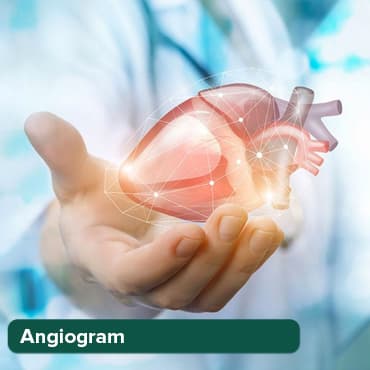
Инновационные методики химического пилинга: что нового?
17 Nov, 2023
 Команда Здоровья
Команда ЗдоровьяChemical Peels: A Journey from Traditional to Advanced
Chemical peeling has long been a mainstay in the field of dermatology, revered for its ability to transform and rejuvenate the skin. As we delve deeper into the intricacies of these treatments, it becomes evident how they have adapted and evolved with the advancements in science and technology, presenting us with a plethora of options that cater to a wide range of skin concerns.
Преобразите свою красоту, Повысьте свою уверенность
Найдите подходящую косметику Процедура для ваших нужд.

Мы специализируемся на широком спектре косметических процедур

The Basics of Chemical Peels
At its core, chemical peeling involves the application of a chemical solution to the skin, which works to remove the damaged outer layers, promoting the growth of a new, healthier skin layer. The effectiveness and depth of the peel depend on the type of chemical agent used.
- Superficial Peels: These peels, often formulated with Alpha Hydroxy Acids (AHAs) like glycolic acid or Beta Hydroxy Acids (BHAs) like salicylic acid, target the outermost layer of the skin. They are ideal for treating fine lines, minor discolorations, and acne. Superficial peels are gentle and require minimal downtime, making them a popular choice for those seeking a quick refreshment for their skin.
- Medium Peels: Trichloroacetic Acid (TCA) is commonly used for medium-depth peeling. These peels go deeper, addressing more pronounced skin issues like deeper wrinkles, acne scars, and more significant pigmentation irregularities. While more effective, they also entail a longer recovery period and more pronounced side effects, like redness and peeling.
- Deep Peels: These involve the use of stronger acids, like phenol, and are designed to penetrate the deeper layers of the skin. They are effective in treating more severe skin damage, including deep wrinkles, extensive sun damage, and pre-cancerous growths. Due to their intensity, deep peels require significant downtime and carry a higher risk of side effects, including changes in skin pigmentation.
Evolution and Adaptation
The evolution of chemical peels is a testament to the advances in dermatological science. With a growing understanding of skin biology and chemistry, newer formulations and techniques have been developed. These advancements have made peels more effective, safer, and suitable for a broader range of skin types and conditions.
- Customization: The modern approach to chemical peeling emphasizes customization. Dermatologists now tailor the choice of peeling agent, its concentration, and the application technique based on the individual's skin type, condition, and desired outcomes.
- Combination Treatments: There's also a trend towards combining chemical peels with other cosmetic treatments like laser therapy, microneedling, or topical treatments, to enhance overall results and target multiple skin concerns simultaneously.
- Focus on Safety and Comfort: Newer peels are designed to minimize discomfort and reduce risks. With innovations like controlled application methods and skin barrier protection, patients can now enjoy the benefits of chemical peels with reduced downtime and side effects.
Chemical peels, in their modern avatar, are not just about exfoliation and skin renewal. They represent a refined, scientifically backed approach to holistic skin health, offering solutions that are as varied as the skin concerns they address. As this field continues to grow, we can expect even more sophisticated treatments that promise to revolutionize the way we approach skin rejuvenation and care.
Самые популярные процедуры в Индия
Дефект межпредсердно
Скидка до 80%
90% рейтинга
Удовлетворительно

Коронарная ангиограф
Скидка до 80%
90% рейтинга
Удовлетворительно

Коронарная ангиограф
Скидка до 80%
90% рейтинга
Удовлетворительно

Пересадка печени
Скидка до 80%
90% рейтинга
Удовлетворительно

Полная замена тазобе
Скидка до 80%
90% рейтинга
Удовлетворительно

Recent Innovations in Chemical Peels
The world of dermatology is constantly evolving, with new techniques and formulations continually emerging. Here's a deeper look into some of the most notable recent innovations in chemical peels:
1. New Peeling Agents
- Modified Phenol Peels: Phenol peels are known for their deep exfoliating properties, but they can be quite harsh. Modified versions have been developed to offer similar results with fewer risks. These newer formulations often include buffering agents to minimize skin irritation and potential side effects.
- Advanced AHAs and BHAs: Alpha and Beta Hydroxy Acids have been a staple in chemical peels for years. However, recent developments have led to more sophisticated versions of these acids. These new formulations allow for a more controlled penetration into the skin, targeting specific layers to treat issues like acne, fine lines, and uneven skin tone with greater precision.
2. Combination Peels
- Tailored Treatments: Dermatologists now frequently combine different types of acids to create custom peels tailored to individual skin concerns. For instance, using Glycolic Acid (an AHA) for its anti-aging properties, combined with Salicylic Acid (a BHA) to address acne and oiliness, offers a multifaceted approach to skin treatment.
- Examples of Combinations: A popular combination is TCA (Trichloroacetic Acid) with phenol. TCA is effective for medium-depth peeling, targeting fine lines and superficial blemishes, while phenol works on deeper wrinkles and more pronounced pigmentation issues. The synergy of these two agents can produce comprehensive results.
3. pH-Adjusted Peels
- The Role of pH: The effectiveness and intensity of a peel are greatly influenced by its pH level. Traditionally, lower pH levels meant more aggressive peeling. However, innovations in formulation now allow for effective peeling even at higher, more skin-friendly pH levels.
- Balancing Act: By adjusting the pH, dermatologists can now offer peels that are both effective and gentle. This means patients can enjoy the benefits of a chemical peel with less downtime and a lower risk of complications like scarring and hyperpigmentation.
4. Time-Release Technologies
- Microencapsulation: This technology involves encapsulating active peeling agents in microscopic spheres. These microspheres gradually release the agent, allowing for a controlled and sustained action on the skin.
- Benefits: The key advantage of time-release technology in chemical peels is the uniformity of the peel. It reduces the risk of "hot spots" where the acid might act more intensely, leading to a more consistent and predictable peeling process. This technology also minimizes the risk of irritation and side effects, making the treatment safer and more comfortable for patients.
These innovations in chemical peels represent a significant leap forward in skincare. By offering more precise, tailored, and safer options, they open up the benefits of chemical peeling to a wider range of patients, addressing a variety of skin concerns more effectively than ever before. As always, it's crucial to consult with a qualified dermatologist to determine the most suitable type of peel for your skin type and concerns.
Explore Further : The Latest Innovations in Chemical Peel Procedures (healthtrip.com)
Technology Integration in Chemical Peels
The integration of advanced technologies into chemical peeling procedures has significantly enhanced their safety, efficacy, and customization. Here’s a detailed look at how these technological advancements are making a difference:
1. Precision Application Tools
- Enhanced Accuracy: New tools have been developed for the precise application of chemical peels. These include brushes and applicators designed to ensure an even distribution of the peeling solution over the skin. This uniform application is crucial for avoiding overexposure in certain areas, which can lead to burns or uneven peeling.
- Controlled Depth: Some of these tools are equipped with mechanisms that control the depth of application. This is especially important for deeper peels, where the risk of complications increases with the depth of the peel.
- Reduced Human Error: With these tools, the likelihood of human error – a significant factor in complications associated with chemical peels – is greatly reduced. This leads to more predictable and consistent results.
2. Skin Barrier Protection
- Protective Formulations: Recent advancements have led to the development of chemical peel formulations that include ingredients aimed at protecting the skin’s natural barrier. These ingredients help maintain the integrity of the stratum corneum, the outermost layer of the skin, which is crucial for protecting underlying tissues and retaining moisture.
- Recovery Enhancement: By preserving the skin barrier, these new formulations not only reduce the risk of adverse reactions but also promote quicker and healthier recovery post-peel. This means less downtime and a more comfortable post-treatment experience for patients.
- Holistic Approach: This focus on barrier protection reflects a more holistic approach to skin health, recognizing that the effectiveness of a peel is not just in its ability to exfoliate but also in how it supports the overall health of the skin.
3. AI & Personalization
- Customized Treatment Plans: Artificial intelligence is now being used to analyze individual skin types and conditions, allowing dermatologists to create highly personalized treatment plans. AI algorithms can assess factors like skin texture, tone, elasticity, and problem areas to recommend the most suitable type of peel and its concentration.
- Enhanced Patient Profiles: AI systems can also track changes in the skin over time, offering valuable insights that help in adjusting treatment plans according to the evolving needs of the patient.
- Predictive Analysis: Beyond personalization, AI can perform predictive analyses to forecast how a patient's skin might react to a certain type of peel. This predictive capability can be instrumental in preventing adverse reactions and achieving optimal results.
The integration of technology into chemical peeling is a game-changer. With precision application tools, protective formulations, and AI-driven personalization, chemical peels are becoming safer, more effective, and tailored to individual needs. These advancements are a testament to how technology is revolutionizing the field of dermatology, making treatments like chemical peels more accessible and appealing to a broader range of patients.
Extend Your Understanding : The Role of Nutrition in Enhancing Chemical Peel Results (healthtrip.com)
In the ever-evolving landscape of chemical peeling, we are witnessing a revolution that brings safer, more effective, and highly personalized treatments to the forefront of skincare. The integration of advanced technologies, innovative peeling agents, and holistic treatment approaches have significantly enhanced the safety and efficacy of these procedures. While the advancements in chemical peels are indeed a leap forward in dermatology, emphasizing the importance of professional consultation is paramount. For optimal results and to ensure the health and safety of your skin, it's crucial to seek the expertise of skincare professionals who can guide you in selecting the most suitable treatment tailored to your unique skin type and concerns. This collaboration with experts is essential in fully realizing the benefits of these innovative and transformative skincare therapies.
Оздоровительные процедуры
Дайте себе время расслабиться
Гарантия самых низких цен!

Гарантия самых низких цен!




